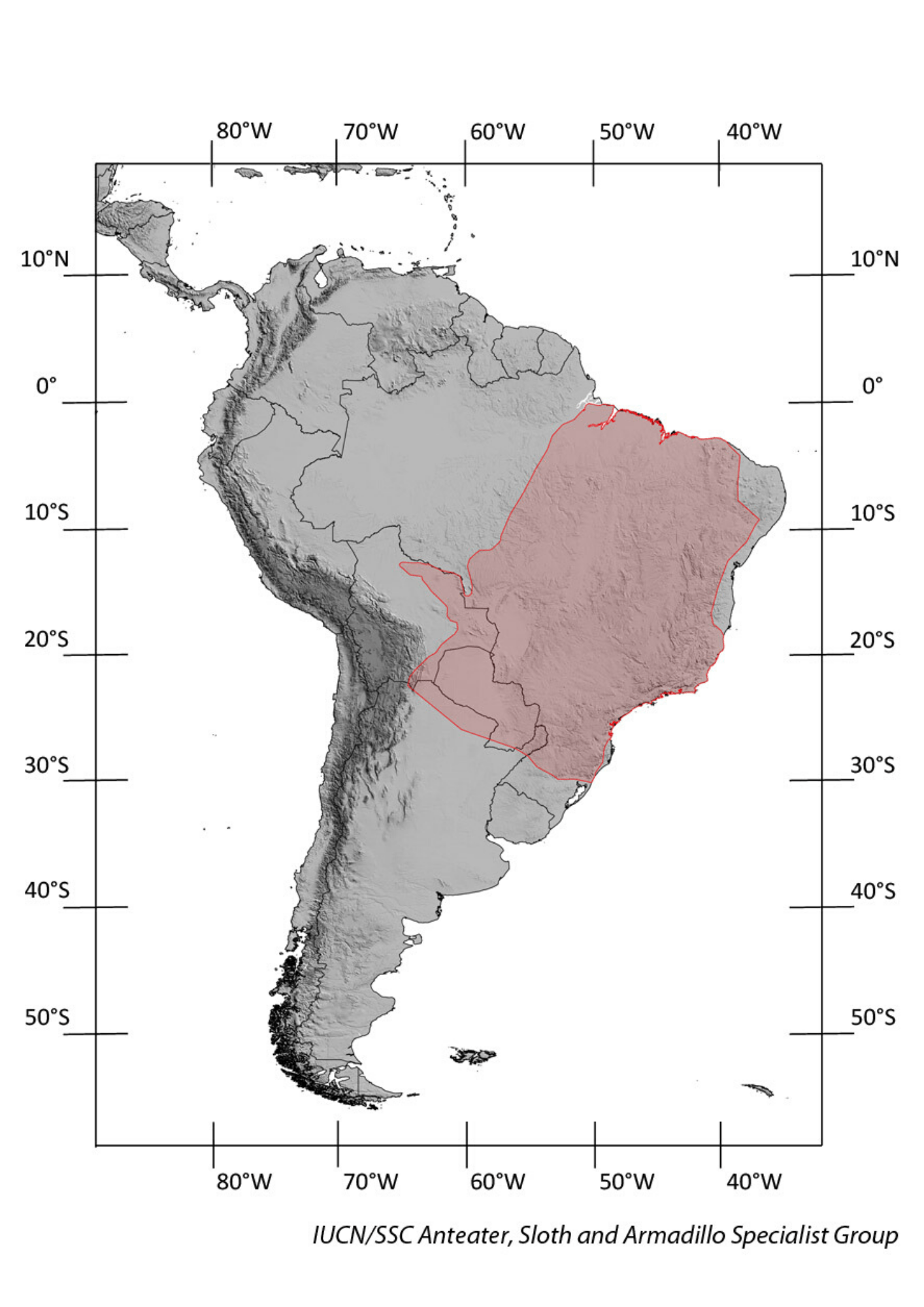Seven-banded armadillo
(Dasypus septemcinctus)
other common names
Brazilian lesser long-nosed armadillo
Taxonomy
Order: Cingulata
Family: Dasypodidae
Subfamily: Dasypodinae


description
This armadillo, the smallest of all Dasypus species, has a head-body length of 24–31 cm, a tail of 12–17 cm, and proportionally large ears, of 2.6–3.8 cm. It weighs around 1–1.5 kg. The grayish to brownish-gray carapace usually has 7 movable bands.
This species is very similar in appearance to other long-nosed armadillos, such as D. sabanicola, D. hybridus, and D. mazzai, but also to juvenile D. novemcinctus; mis-identifications are therefore frequent.

range
Dasypus septemcinctus ranges from the lower Amazon Basin of Brazil to the Gran Chaco of Bolivia, Paraguay, and possibly northern Argentina. Its southern limit is uncertain because it occurs in areas where other, similar-looking long-nosed armadillo species are found.

HaBITAT and ECOLOGy
Dasypus septemcinctus lives in grasslands and savannas. However, in south-eastern Brazil it prefers to live in gallery forests. It appears adaptable to human disturbance and secondary habitat.
The seven-banded armadillo is probably nocturnal, relatively asocial, and solitary. The population density in central Brazil has been estimated at 0.3 individuals per hectare, which suggests that the species is relatively uncommon and widely scattered.

curious facts
Some recent studies suggest that D. septemcinctus and D. hybridus are actually the same species (i.e., synonyms).

reproduction
Not much is known about the reproduction of this species. After mating, females delay implantation for 2–4 months. Gestation is about 6 months, after which 4–8, presumably monozygotic (i.e., genetically identical) offspring are born.

diet
The few studies performed on the diet of this species revealed that it feeds on insects, seeds, and other plant material.

threats
There are no known major threats to this species. Locally, D. septemcinctus is threatened by habitat degradation and hunting for food. Furthermore, dogs kill this armadillo, which can be a local threat.

Population trend
Unknown.

conservation status
Dasypus septemcinctus is listed as Least Concern in view of its wide distribution, presumed large population, its occurrence in some protected areas, and because it is unlikely to be declining fast enough to qualify for listing in a threatened category.